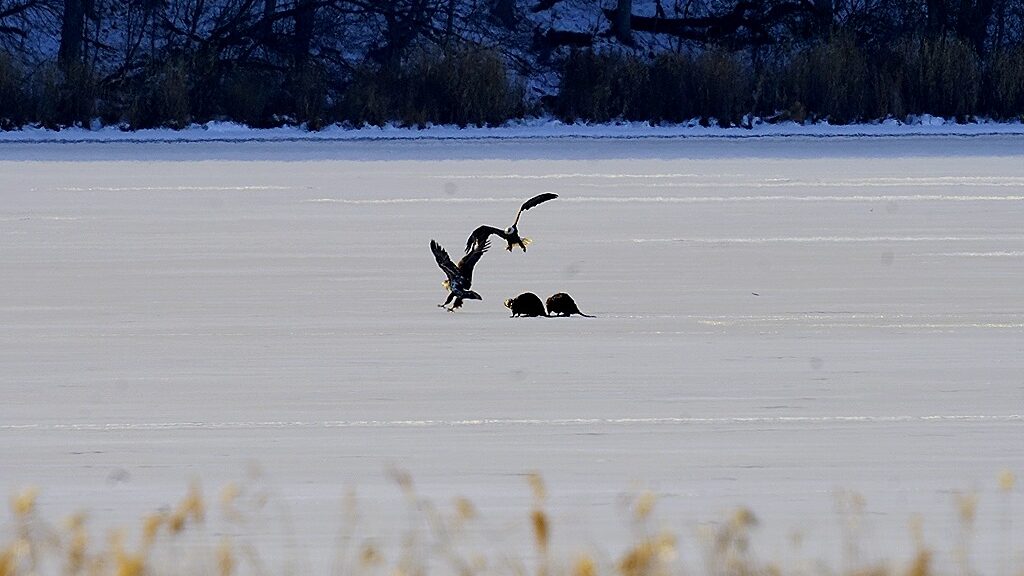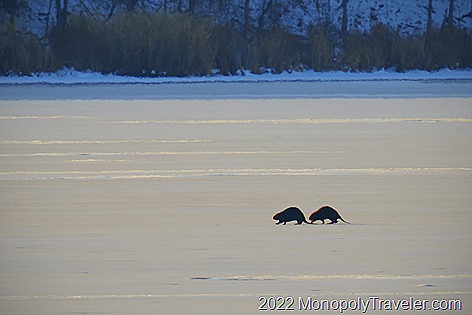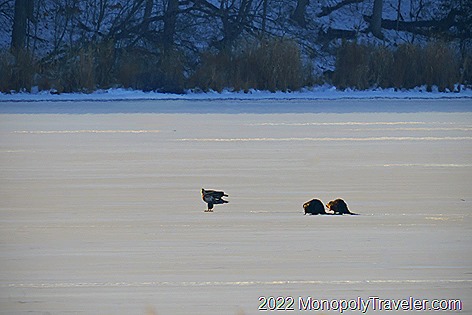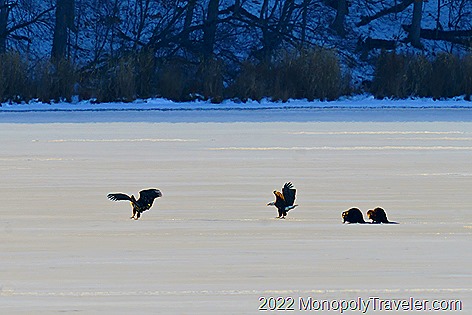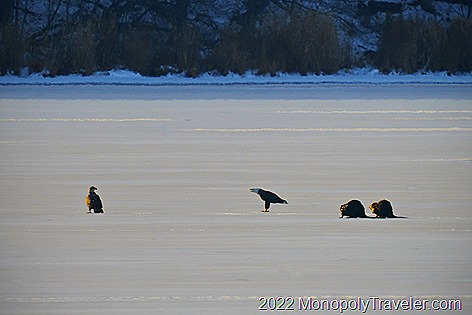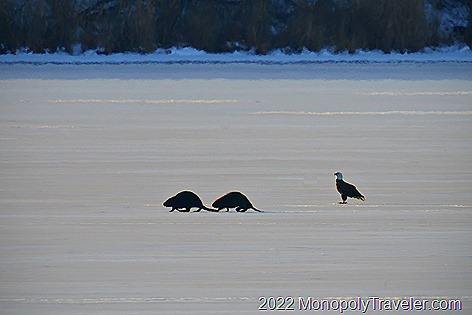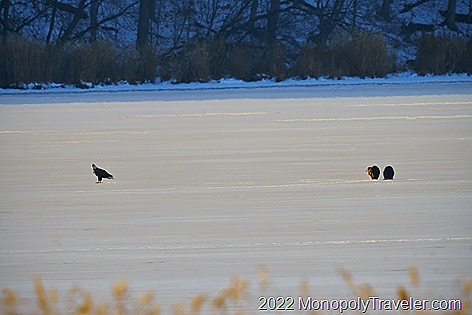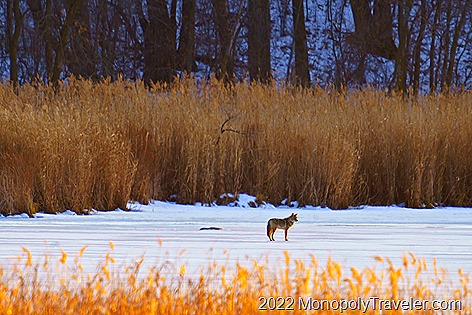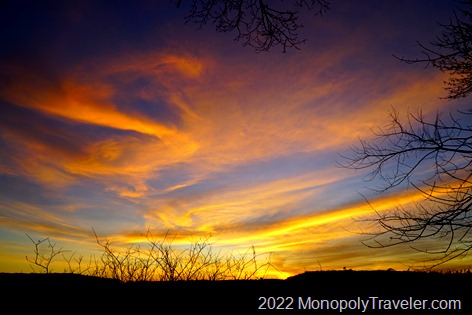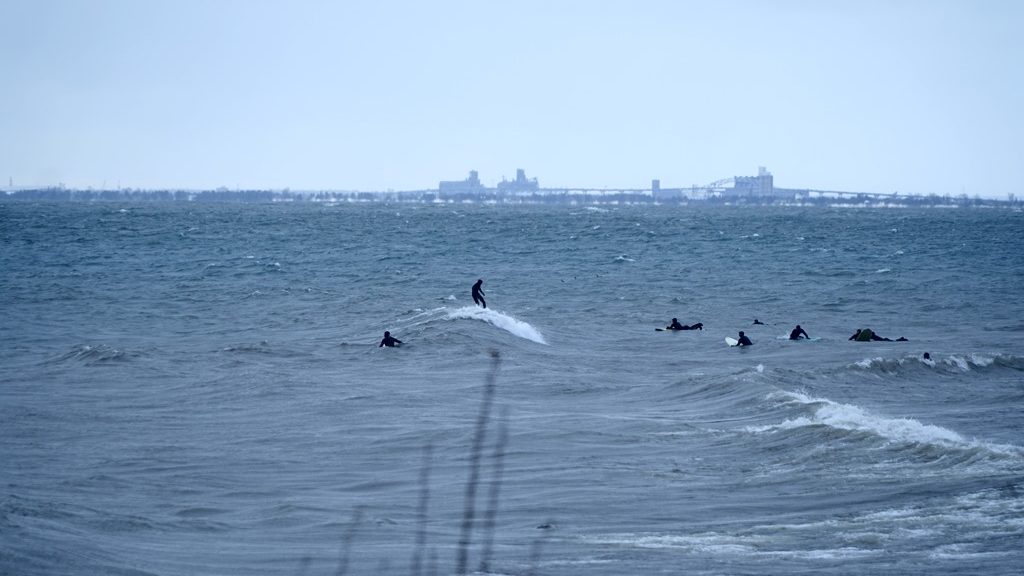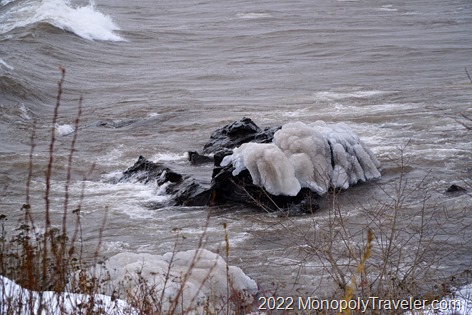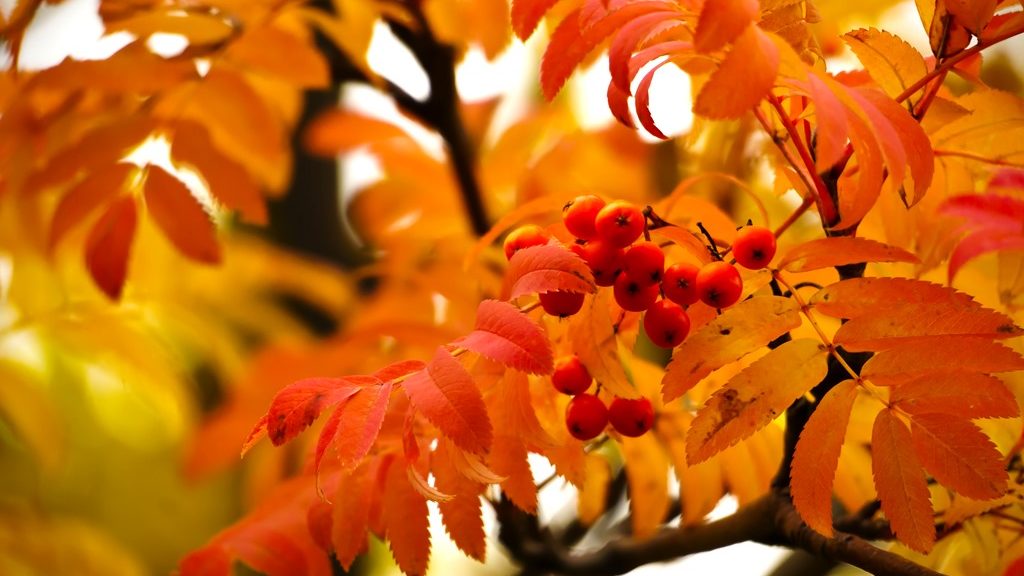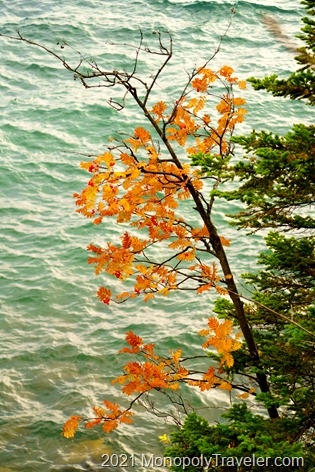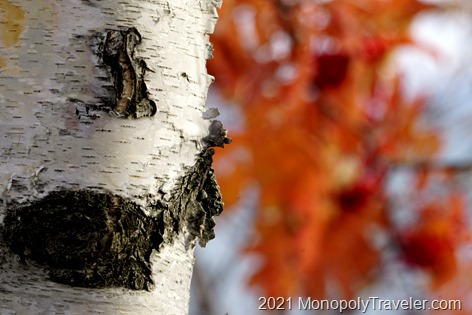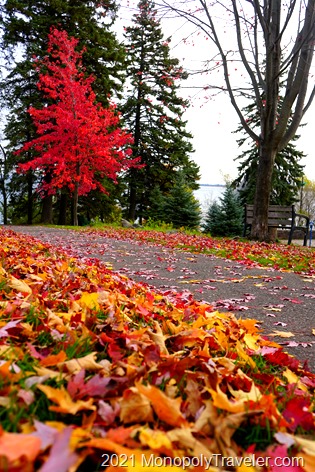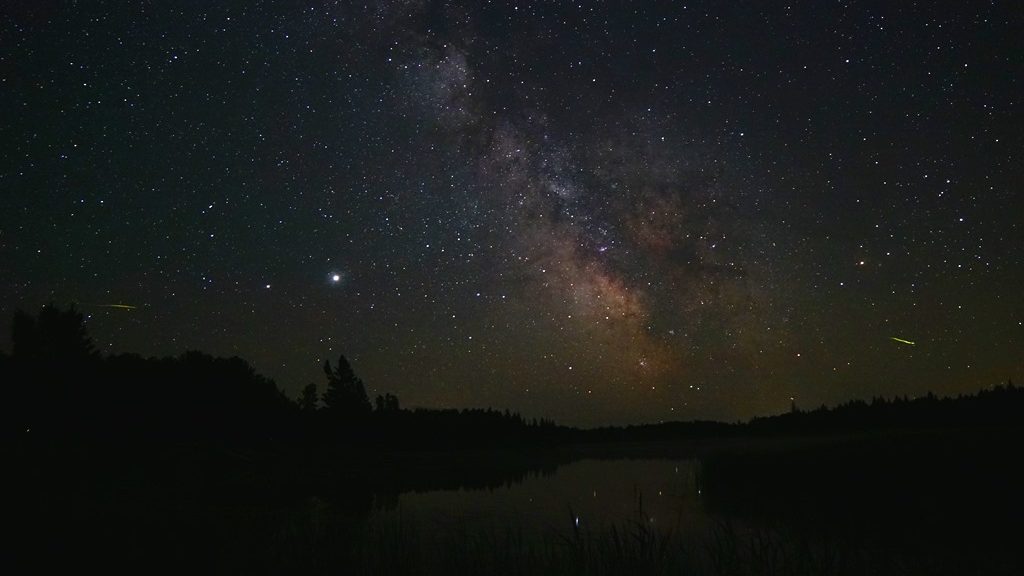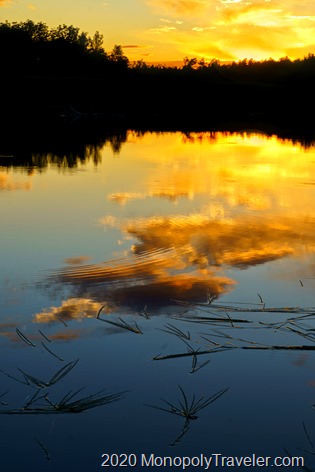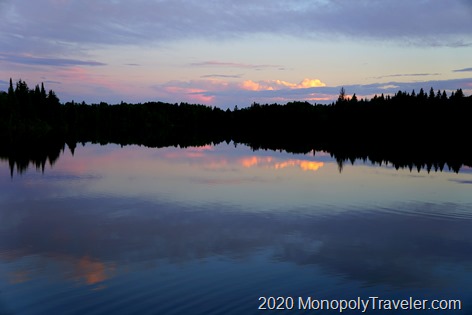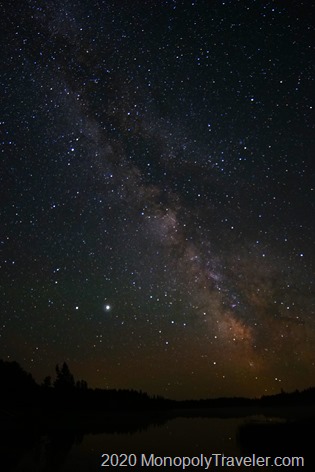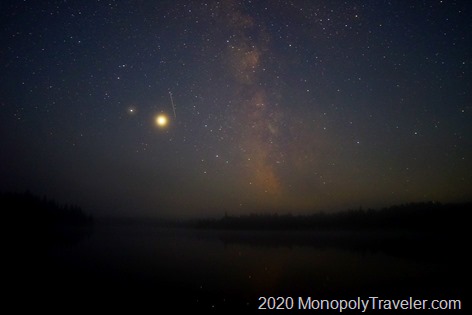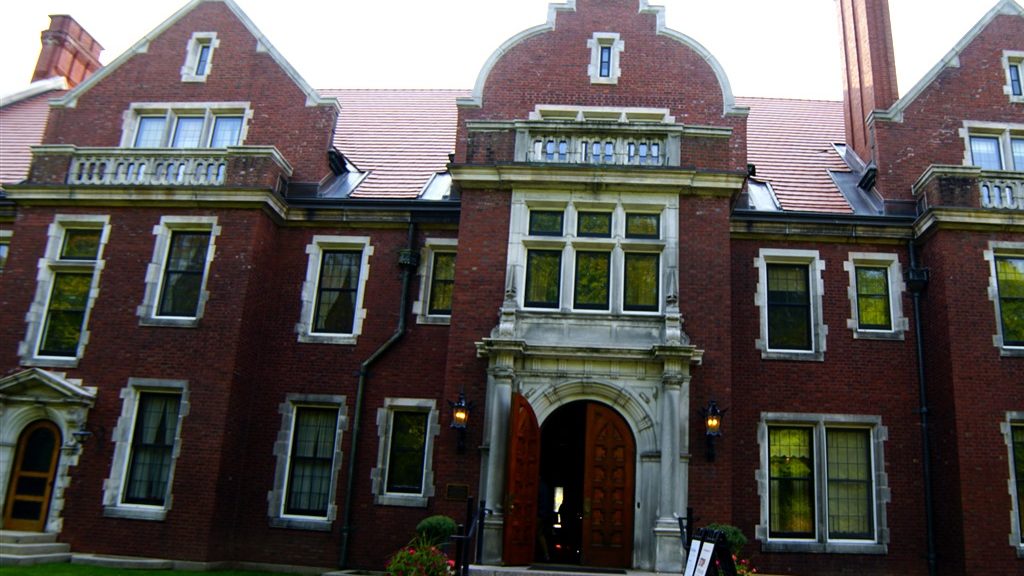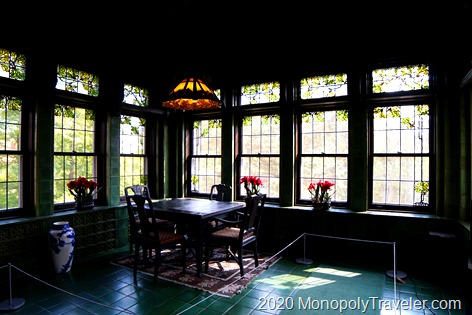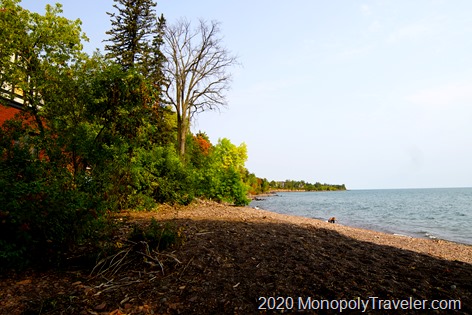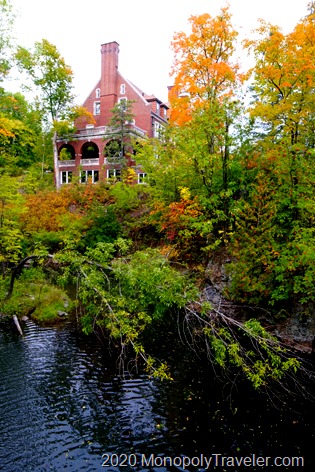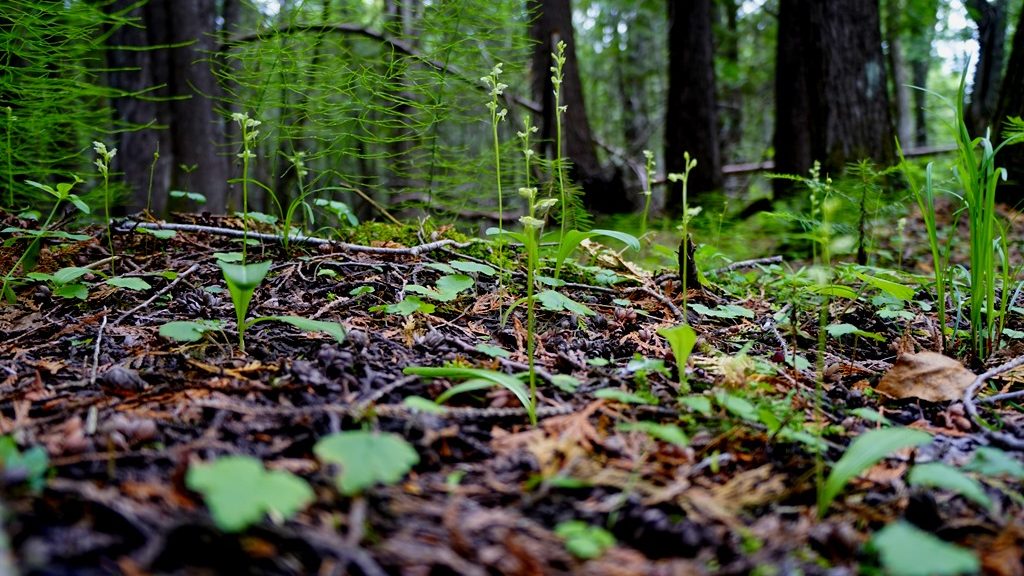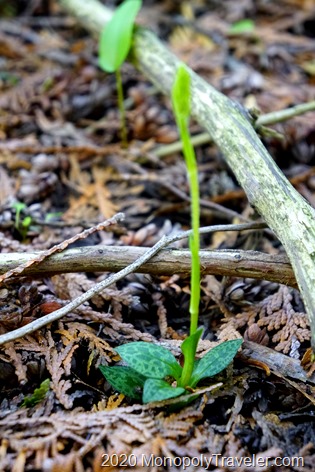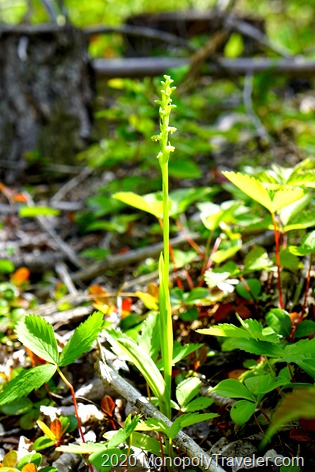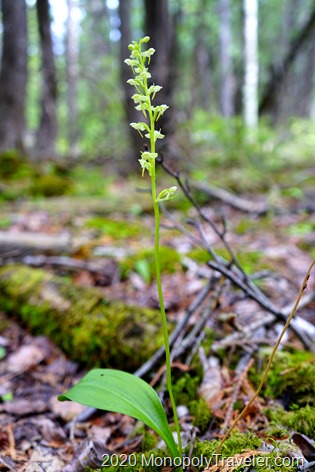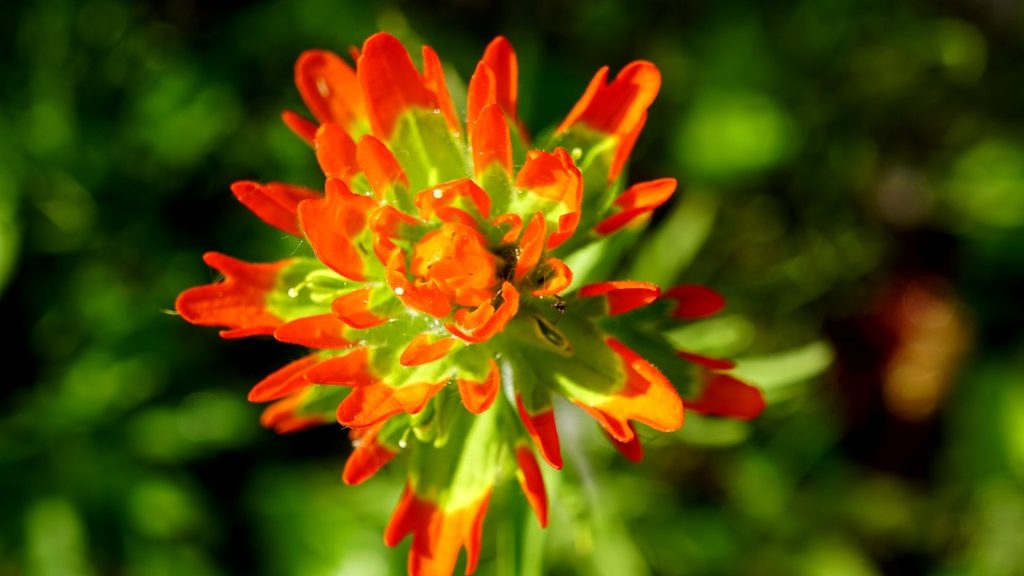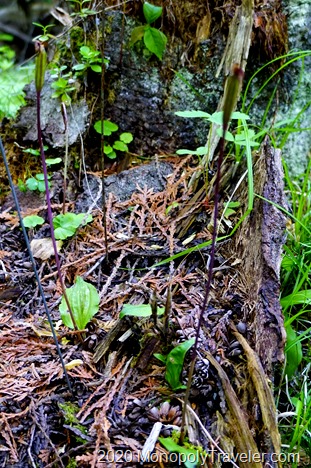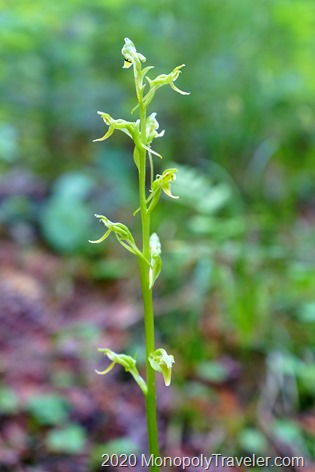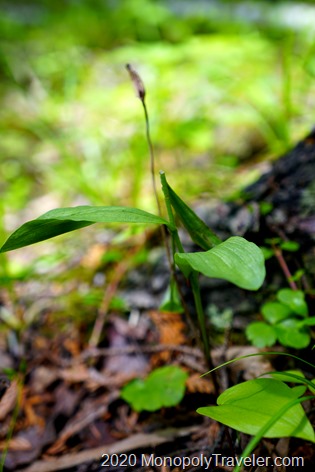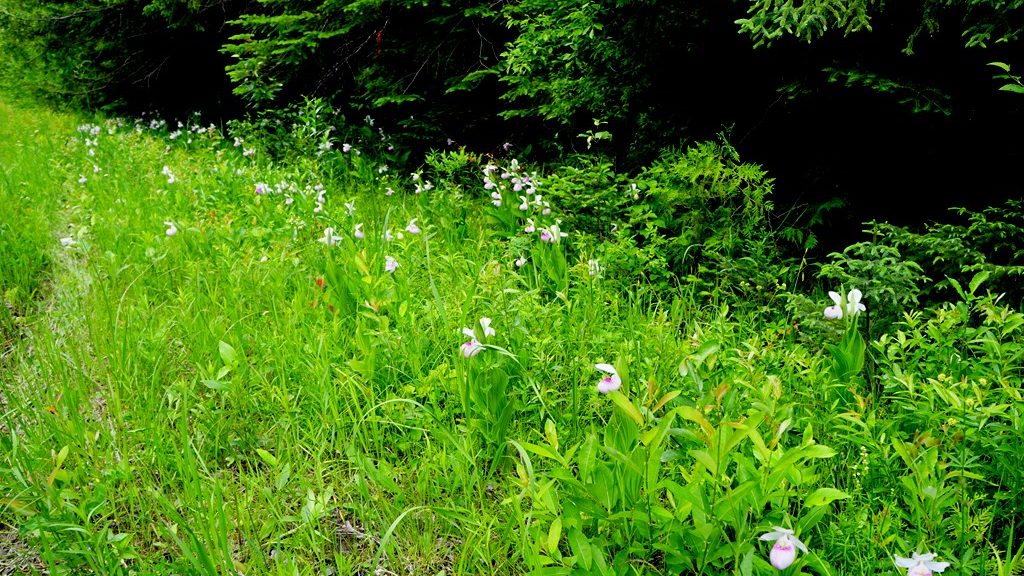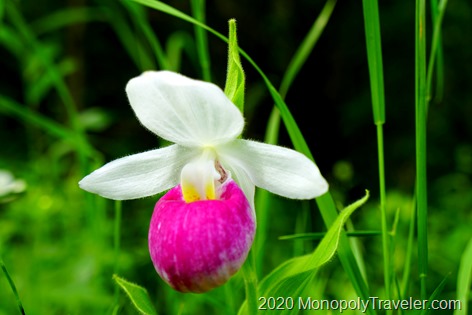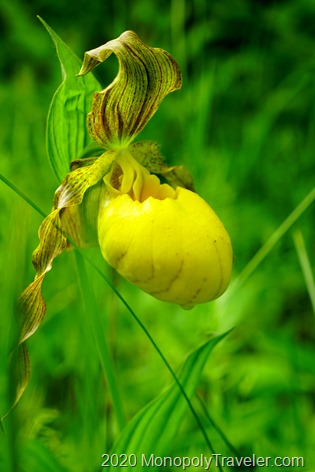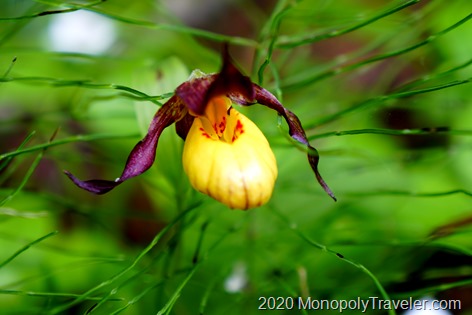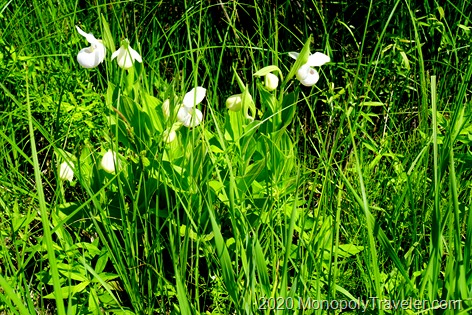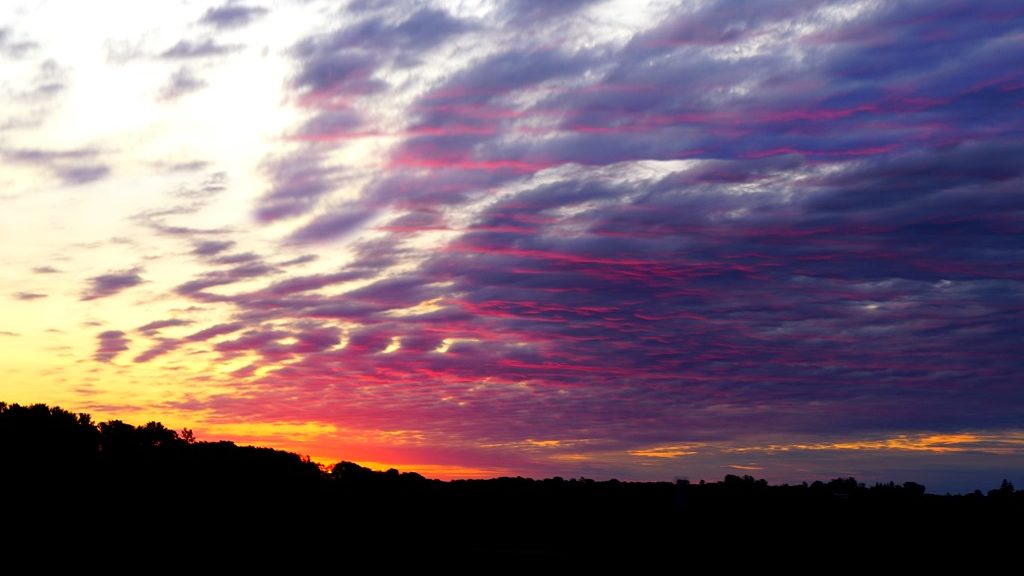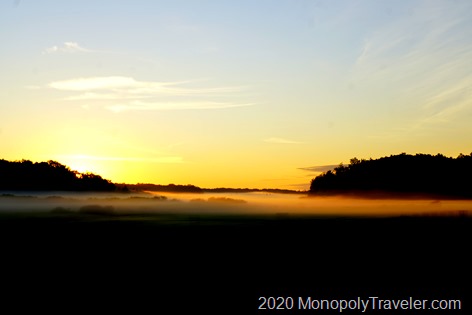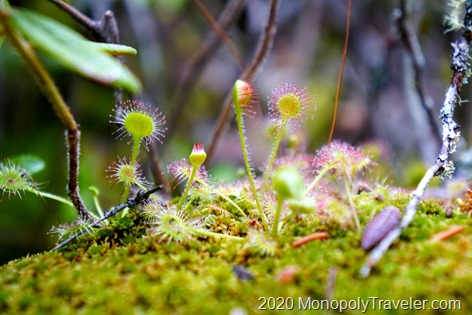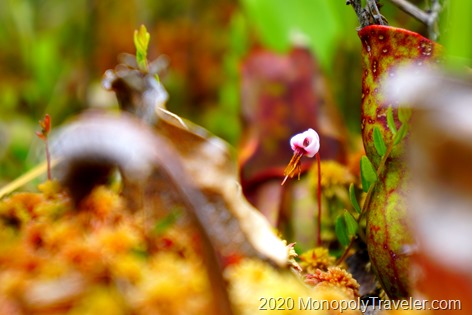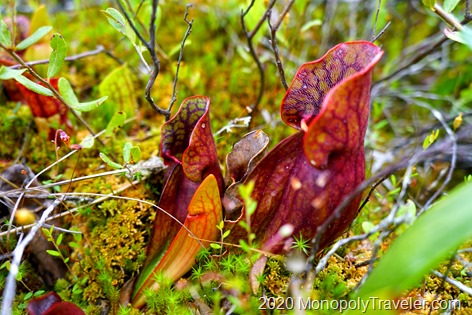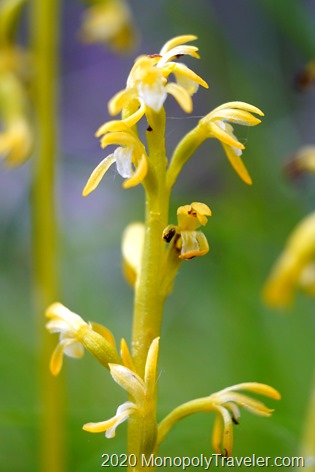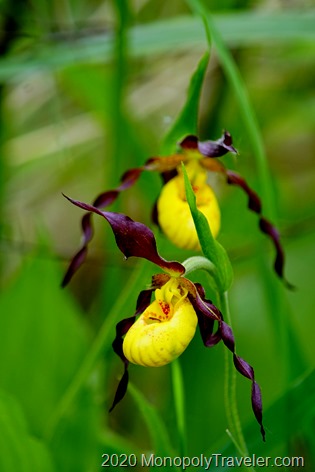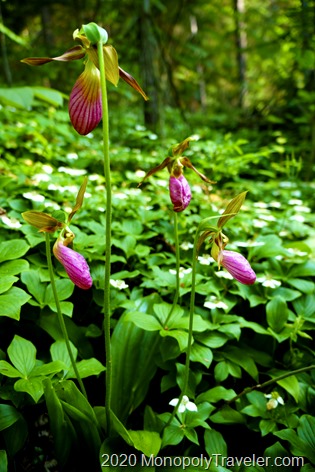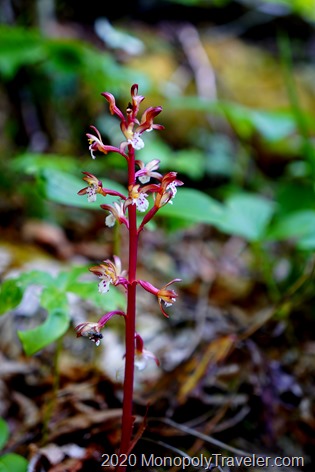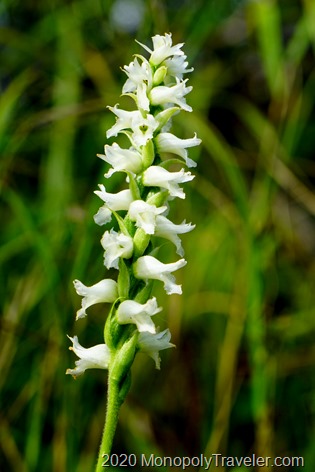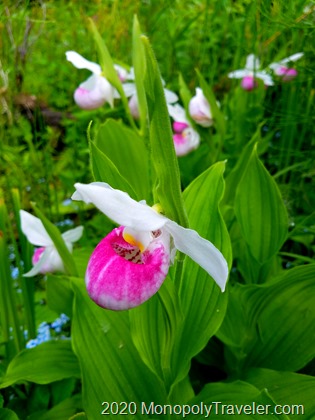Friday after Thanksgiving brought a beautiful fall day with the sun shining, warming temperatures, and calm winds all combining to decay the recently fallen snow. I had to get out and go exploring even though I didn’t really expect to see anything as is common late in the day this time of year. While getting my photo gear ready, I noticed another person quickly walking towards a lessor used trail carrying binoculars. His direction suggested he was heading to the same location I planned to visit. Now debating on still heading to my intended spot or pursuing a new direction, I chose to keep going where I’d planned. Getting on the trail, there was only a couple of hours of daylight left so not much time to explore signs of wildlife and also get to a spot for the sunset. There were a few high clouds in the sky which had the potential for a colorful end to the day making it my main subject of this outing.
Arriving to a small stream where water leaves a little pond, there was the gentleman I had seen leaving the parking lot. He was scanning the horizon on this nice afternoon in search of wildlife moving in the open woods. About to pass him without a word, I looked over and decided to say hello mentioning what a treat it was to be out there taking in the suns warmth. He responded and a conversation ensued.
As we were talking about the area we were in and sharing stories of our adventures in this park, I noticed something moving out on the recently formed ice. He quickly brought up his binoculars and said they appeared to be otters. Setting up my camera, I focused on this moving area and saw the two small creatures walking together along the ice. Watching them for a few minutes I noticed they moved slightly different than otters. Then they turned a little and I noticed the wide, flat tail confirming they were not otters but beavers out for an afternoon walk. Could they be out enjoying a warm afternoon reprieve from the cold also? After watching for a few minutes, a visitor joined them .
At first I thought it was a crow looking for a scrap or two from these beavers when my new acquaintance mentioned it was an Eagle. Looking closer I could now see it was a juvenile Eagle. Another Eagle quickly circled overhead coming near the beavers and nudging the young Eagle further from these furry critters. This Eagle was an obvious adult with the signature white head and tail. Was there something there on the ice that these animals were interested in? Eagles and Beavers didn’t really seem like likely companions. We continued to closely watch the interactions to try and figure what may be happening.
The adult Eagle began scolding the younger bird almost like it was chasing it away from these beavers. Was it protecting them? There was no aggression towards the mammals as they stayed almost motionless while these two Eagles were figuring out what they were going to do.
With the juvenile Eagle now further away, the beavers continued on their journey down the ice, passing by the adult bird with a bit of a nod almost as if saying good afternoon or thank you. There was no act of aggression by either animal towards the other. Such a strange and interesting encounter to witness. What was the purpose of these eagles circling and landing near this pair of beavers. Were they planning on attaching for a meal and once they were on the ice decided this was not going to be a successful battle? If you’ve ever been close enough to a beaver to see their teeth, you understand how much of a weapon those can be. One well placed chomp will leave any creature missing a limb.
For some unknown reason, the beavers stopped walking, turned around and started heading back towards the Eagle still on the lookout. This seemed very strange to me. Why did they decide to turn around and head back towards where they came from? Soon this pair of beavers again passed the adult Eagle enroute to the area they started from. I’ve never witnessed something like this before and continued watching until the Eagle left and the beavers were out of sight. Puzzled I began to wonder and just accept this unlikely interaction while searching for a spot to enjoy the nearing sunset. Something to research at a later time.
With the beavers out of sight and the Eagles now back in the air, I settled into my spot to wait for the sunset. Scanning over the landscape, I noticed another animal entering the sheet of ice. Expecting it was probably a deer coming out beginning its search for food, I brought up the camera once again. I’ve seen plenty of deer in this area and thought I would just watch this creature explore the cattails while taking in the last moments of sunshine. Focusing in on this animal as it was meandering near the cattail filled shoreline, I realized it was not a deer but a coyote. This is the exact area the beavers were heading. Could it be possible that the Eagles were warning these two wanderers of danger heading this way? Do animals work together to protect one another like this? What benefit would Eagles have to save beavers from a larger predator? Had the coyote manage to capture one of these beavers, the Eagles may have had an opportunity to snag a portion of this meal. Maybe it was all just a coincidence but my feeling is it was something more.
Typically a warm, late fall day is pretty quiet with wildlife relaxing and basking in the warmth, but this turned out to be an active afternoon out on the newly iced over lake. The sun was now at the horizon providing a beautiful end to this afternoon in the park with a colorful sky. Eventually I convinced myself to pack up and find my way through the woods to my car as the light continued to dim making my path difficult to follow. Leaving the park, the clouds hung on to the pinks and reds refusing to concede to the night sky. A great way to spend one of the last warm days of the year.

